
Interwar East Central Europe, 1918–1941
Interwar East Central Europe, 1918–1941: The Failure of DemocracyBuilding, the Fate of Minorities. Edited by Sabrina Ramet. London and New York: Routledge, 2020. 360 pp.
More...We kindly inform you that, as long as the subject affiliation of our 300.000+ articles is in progress, you might get unsufficient or no results on your third level or second level search. In this case, please broaden your search criteria.

Interwar East Central Europe, 1918–1941: The Failure of DemocracyBuilding, the Fate of Minorities. Edited by Sabrina Ramet. London and New York: Routledge, 2020. 360 pp.
More...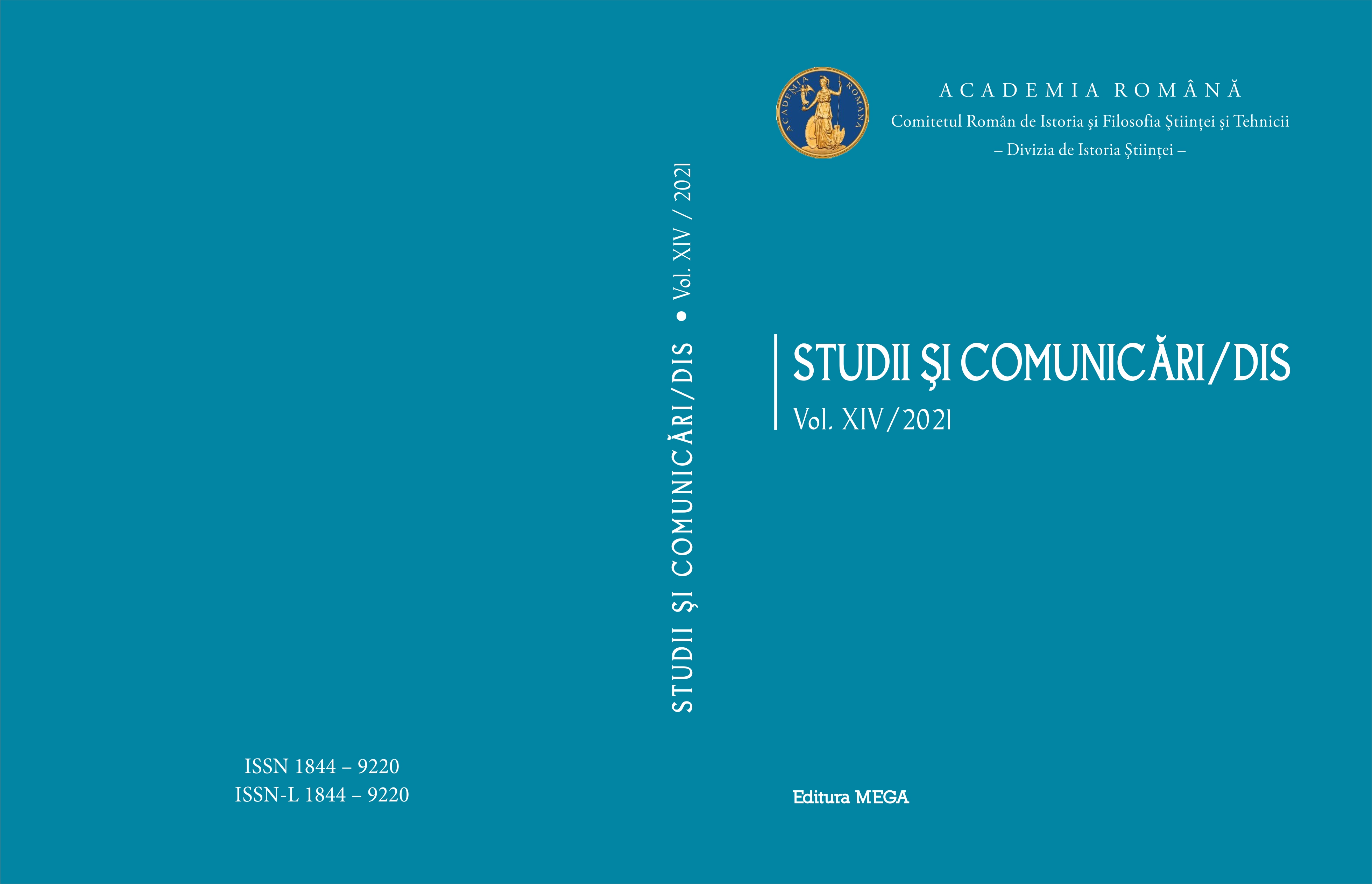
The conduct of the World War I military operations, including those of the Romanian troops, was influenced by the diplomatic actions and games of the Great European Powers, as well as by the information superiority of the opponents of our country. This is how the Army’s Intelligence Service was reorganized, its missions contributing to the identification of foreign espionage and propaganda institutions, the determination of their leadership and objectives, and the degree of danger that could affect Romania’s security. The evolutions of the war led to the reconfiguration of the objectives in the field of Romanian military information, aiming to improve the methods, means and procedures of information gathering, adopting modern technical means of collecting data and information, following the support and close cooperation with the French Military Mission. The war experience resulting from the campaigns of the First World War was complemented by the remarkable support that was offered by tens of thousands of civilians, men, women and children from all over the country, animated by a developed state instinct, of high national consciousness and a strong patriotic feeling. At the end of the assessments that analysts have made on the evolution of the Romanian Military Intelligence Service, during the war for the reunification of the homeland, it is stated that it took advantage of the experience of the war, the intelligence service being organized and functioning according to it .The roles of the Service became quite clear and well defined and its activity was intense throughout the war. Military Intelligence Service missions were accomplished with the direct presence of senior state officers, who worked with intelligence and dedication in this area, during the campaign.
More...
Die Aufgabe dieses Artikels war, vor allem, die Analyse des Laufes der Senjer Geschehnisse vom 9. Mai 1937, wie auch die Beschreibung des Widerhalls in der ÖffenÜichkeit, der gleich nach dem Verbrechen der Gendarmen erfolgte. Das Geschehnis wird im Kontext des, durch die politischen Organe durchgeführten, Terrors eingesehen. Der Artikel ist in drei Teile geteilt. Nach einem kurzen Rückblick auf die politischen Umstände in Kroatien und Jugoslawien in der zweiten Hälfte der dreißiger Jahre und auf den Terror, den die Staatsbehörden durchgeführt haben, folgt eine bis auf jedes Detail eingehende Darstellung des Geschehnisses. Danach werden die Reaktion der Offentlichkeit, wie auch verschiedene Formen der nach dem Verbrechen erfolgten Repressionen beschrieben. Als eine eigenartige Illustration des Inhaltes dieser Arbeit werden Faksimile beigelegt. Die Erörterung gründet sich auf der Analyse der Senjer Geschehnisse, die im Archiv des Instituts für zeitgenössische Geschichte in Zagreb aufbewahrt sind. Die Grundquellen dieser Analyse sind: Berichte der Polizeiverwaltung in Zagreb, die Tatbestandaufnahme, die durch den Inspektor der königlichen banischen Verwaltung J. Tucan durchgeführt wurde, Berichte des Staatsvorstehamtes in Senj, Flugschriften die nach dem Geschehnis gedruckt wurden und die Todesanzeigen der Umgekommenen. Ein originelles Kennzeichen hat auch die Broschüre von Dr. Vlatko Maček »Istina o krvavim događajima u Senju dne 9. 5. 1937« (»Die Wahrheit über die blutigen Geschehnisse in Senj am 9. Mai 1937«, Zagreb.)
More...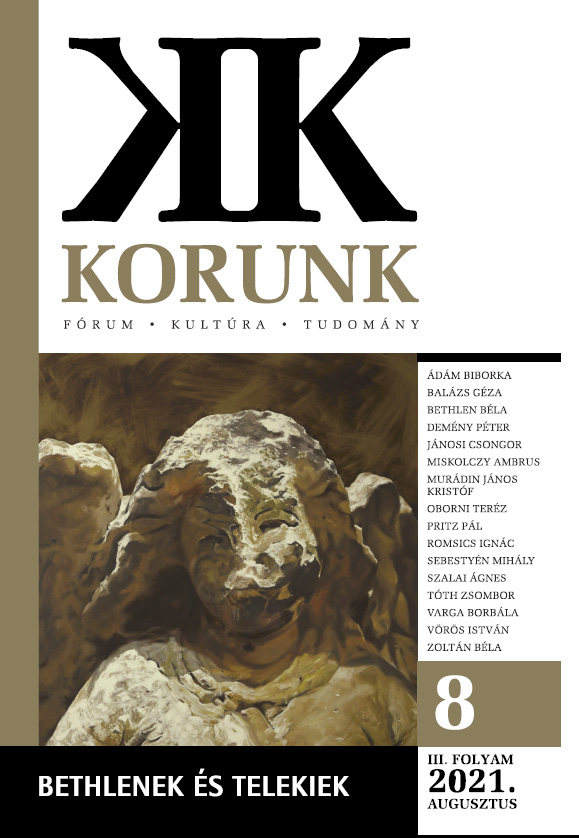
Hungarian history in the 20th century produced three aristocrat and one plebeian statesman. This ratio also reflects the fact that, for a long time, the aristocrats were the leading force in the nation. On the other hand, Telekiʼs and later Bethlenʼs rise to power was far from being a natural consequence of the Hungarian history of the time. It is the German question, not the loss of the war, that explains the decline of St. Stephenʼs Hungary. The collapse was compounded by the fall of the revolutions. The Christian middle class claimed the leading role in the counter-revolutionary resurgence. The election of the governor brought a resounding victory for Miklós Horthy, representative of the Christian middle class, and a heavy defeat for his rival, the aristocratic Albert Apponyi. It is within this framework that the study examines the life and work of Pál Teleki. It places his attitude towards the Jewish question in a holistic context.
More...
One of the most important part of Leninist policy in the 1920s and the early 1930s was collectivization of agriculture whose aim was the creation of so-called collective farms. Kolkhozes were created as a result of a forced takeover of land from farmers called “kulaki”. The establishment of collective farms in Ukraine faced the greatest resistance of the civilian population, especially the Polish population whose numerous clusters existed in the Podole region. Evidence of the authorities ruthlessness in implementing the collectivization plan was a decree from August 7 1932 about the death penalty and prison – “for stealing and wasting socialist property”. This document was called “law of five ears”. In order to break the resistance against enfranchisement of the population, the authorities intentionally evoked “great hunger” which caused the deaths of six million people.
More...
In December 1922, the first presidential election in history took place in Poland. Voting was not universal because the National Assembly made their choice. One of the candidates for the office of president was proposed by Stanislaw Thugutt. He was the leader of the Polish People’s Party “Wyzwolenie/Liberation”. PPP “Wyzwolenie/Liberation” was one of the largest peasant parties in interwar Poland. In comparison with the largest peasant party in the Second Polish Republic – the Polish People’s Party “Piast” was a leftist party. On December 9,1922, both parties supported the same candidate in a decisive vote. It was Gabriel Narutowicz, who was then the Minister of Foreign Affairs. In addition, he was a well-known civil engineering engineer in Europe, in particular hydroelectric power plants. It should be emphasized that Narutowicz was not a member of PSL. Unexpectedly, Narutowicz won the election and became the first president in Polish history. In the decisive fifth vote, he defeated the right-wing party candidate. It was a great success for Thugutt, who proved to be a foresight politician. Unfortunately, a week after the election, Gabriel Narutowicz was murdered by a right-wing fanatic. However, this did not change the fact that the first president in Polish history was the candidate proposed by the people’s party.
More...
The paper describes the role of local authorities of poviat and commune level in the Second Republic of Poland in the area of widely understood support for the functioning of education system in common schools in rural areas in the period between 1918-1939. The paper outlines the main rules of the functioning of local authorities, paying attention to its democracy between 1918-1926 and its drastic distortions and restrictions introduced by the political camp of Marshal Józef Pilsudski, particularly between 1933-1939 when the reform of local authorities was introduced in a way that it could be beneficial for this political camp. The subsequent part of the article presents, among others, forms of cultivating the memory about the teachers who fought for the Polish education under foreign occupation.
More...
The main purpose of this article was to show the socio-economic activity of Joseph Panaś in the press peasant movement in the period 1926–1939. The hero of this article came from a peasant family, so his activity first in the PSL “Piast” and later in the SL treated as a service to he village and peasant affairs. Chaplain focused its activities mainly in the area of Eastern Galicia. He called for the need improve the position of the Polish countryside and its inhabitans. Many of his articles on this subject appeared mainly in the pages ”Zielony Sztandar” and in the “Gazeta Grudziądzka”. Father Colonel J. Panaś fought mainly exploitation of the rural population and economic injustice. In addition, published articles have sought to ensure the defense of the polish state. It should be noted that Joseph Panaś was one of the most active peasant activists in the interwar period. His journalism in the press peasant movement had a big mark on the ideological opposition to the then government. To sum up, it must be stated that his believed that the primary purpose of his activity must defend both the political and economic interests of the village.
More...
During the period of the prime minister's office by Józef Piłsudski, agricultural policy focused on activities aimed at protecting the consumer's interests. As a result, it focused on activities aimed at regulating the prices of agricultural commodities, mainly cereals. Such regulation by means of export restrictions contributed to a sharp fall in cereal prices. Regulation of trade in agricultural products did not positively affect the amplitude of price fluctuations. The reason for this was the undecided government export and import measures. Frequent changes caused anxiety among sellers and buyers, which caused that the price differences paid by producers and consumers significantly increased. Therefore, this policy encountered serious resistance from the landowners' spheres, merchants, as well as grain millers, who were also trade with grain. The attempt to develop a comprehensive plan of aid to agriculture was undertaken only at the turn of 1929 and 1930. The government's actions aimed at intensifying agricultural production did not bring good results. Eventually, they were stopped by the economic crisis.
More...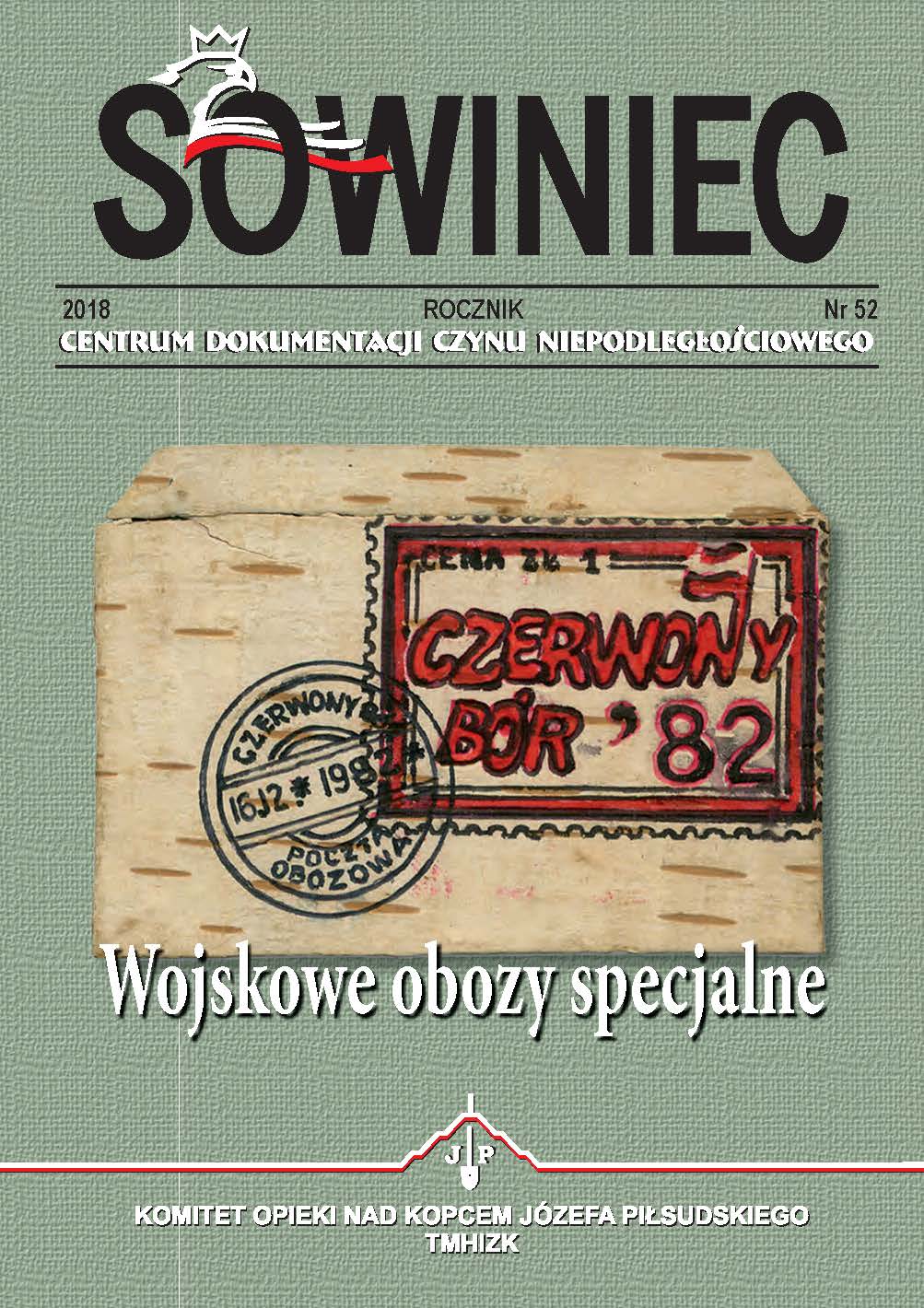
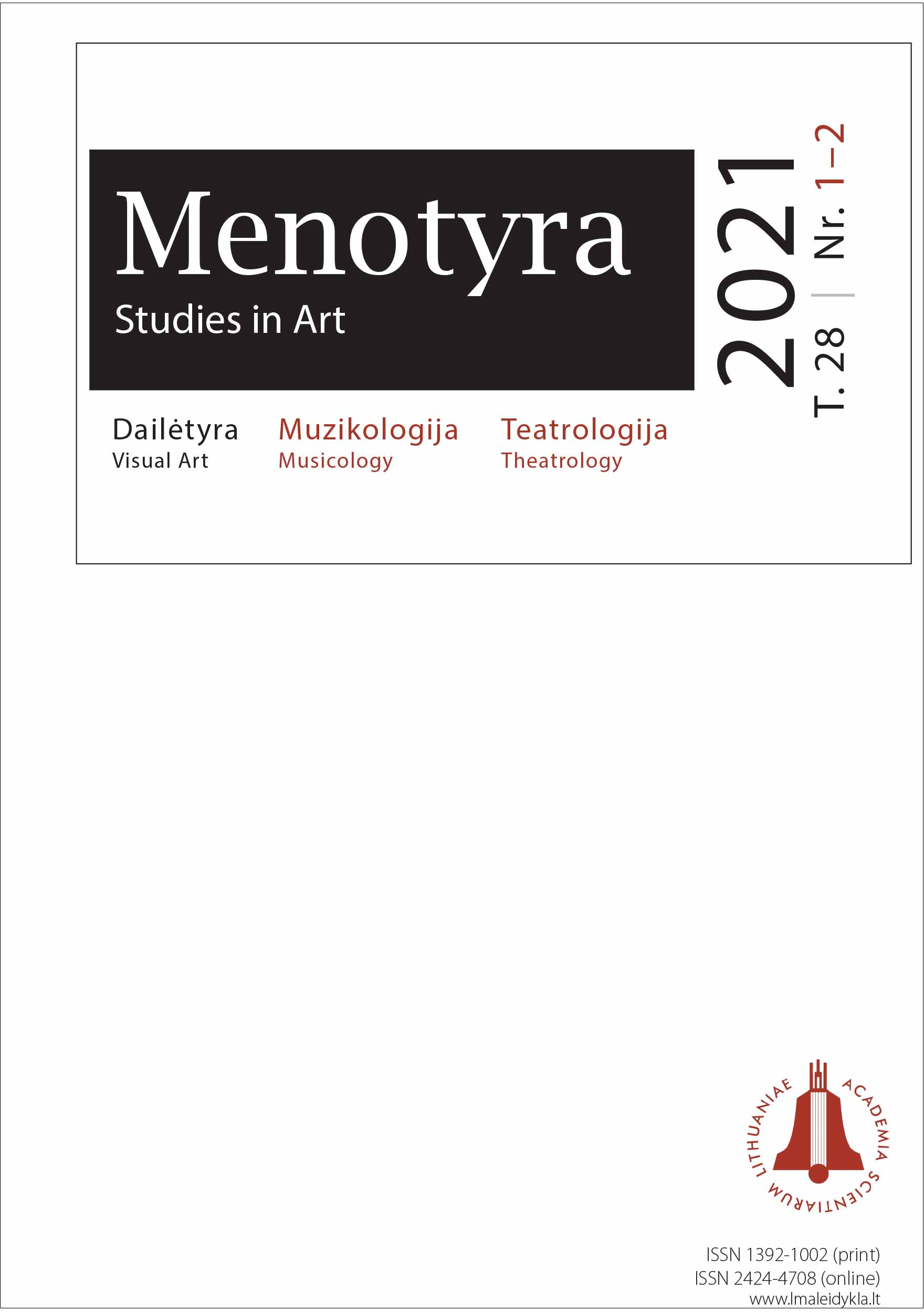
On 29 April 1930, the premiere of Ferdinand Bruckner’s The Criminals (original title Die Verbrecher) directed by Aleksander Zelwerowicz took place at the Teatr Wielki na Pohulance in Vilnius. After two performances, the play was cancelled by the mayor of Vilnius. The authorities of the city were outraged by the ‘drastic amoral scenes (homosexual love, abortion)’. Zelwerowicz submitted his resignation, which he withdrew a few days later. A performance combined with a debate on the drama was organised. One of the Literary Wednesdays was also devoted to a discussion about The Criminals. The Słowo daily published an open letter to the director Zelwerowicz ‘supporting his repertoire policy’. Eventually, The Criminals was cancelled. Based on the unique documents I have found, publications in the press, photographs, and reminiscences of the participants, I will try to reconstruct these events and, above all, to describe and reinterpret the performance that was to ‘introduce the cultural Vilnius to the truly modern and European track’.
More...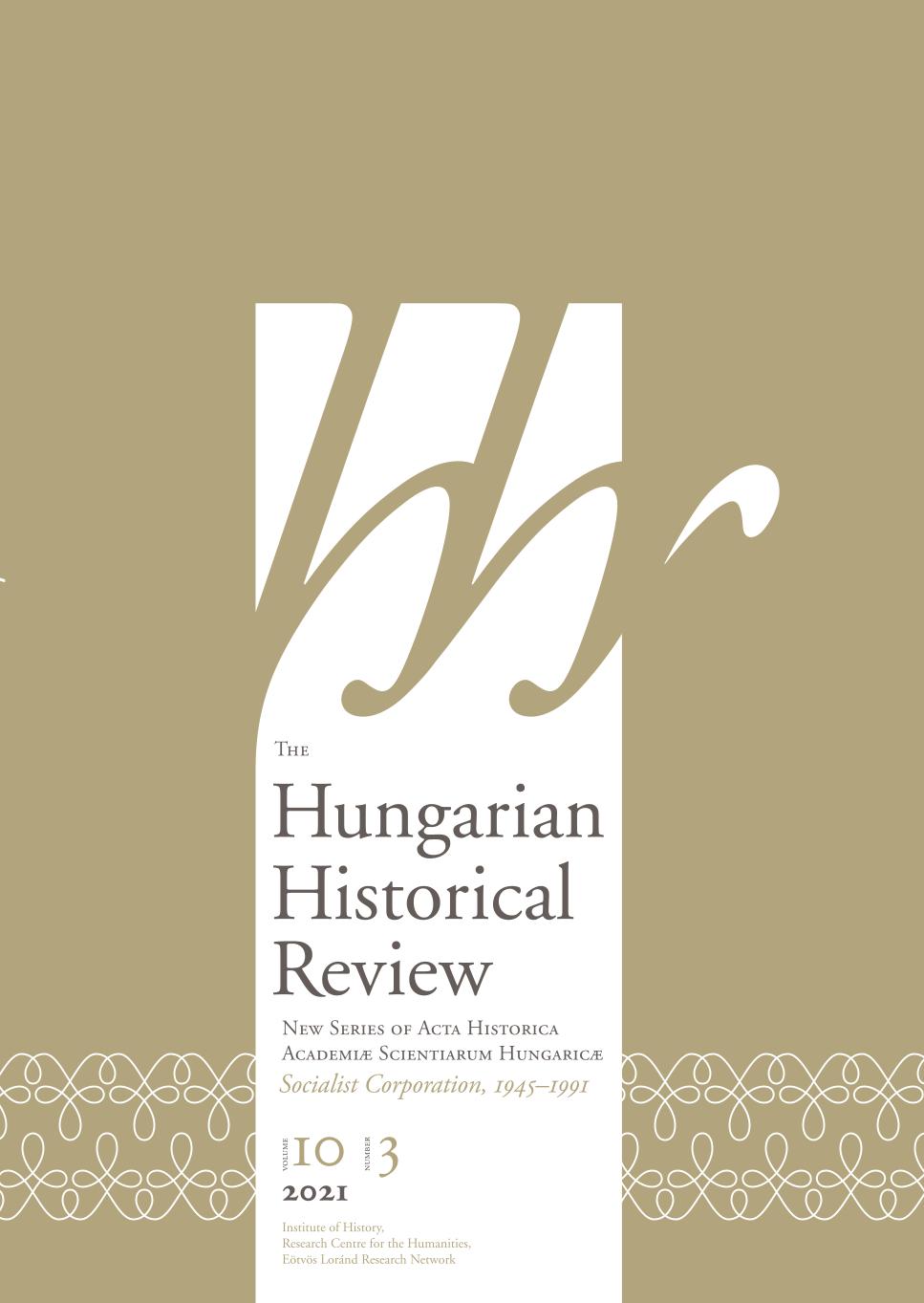
The paper focuses on cooperatives—seen as business enterprises—in the First Czechoslovak Republic (1918–1938) and the period of 12 years after the communist putsch (1948–1960). It compares the functions of cooperatives, the limits placed on their (semi-)independent business activities, and their chances to decide for themselves in the market economy and the centrally planned economy. Drawing on the methods of business history and economic history, the study seeks to answer the following questions: 1. Were the cooperatives in the First Czechoslovak Republic really fully independent companies running their business on a free market? 2. Were the cooperatives in the Stalinist and early post-Stalinist Czechoslovakia really subordinated subjects in a centrally planned economy? 3. Are there any real connections in the functioning of cooperatives in these two eras? In other words, is it possible that something of the independent cooperatives survived and that the traditional interpretations (according to which the two eras were completely different and even contradictory) can be seen in new and more accurate ways?
More...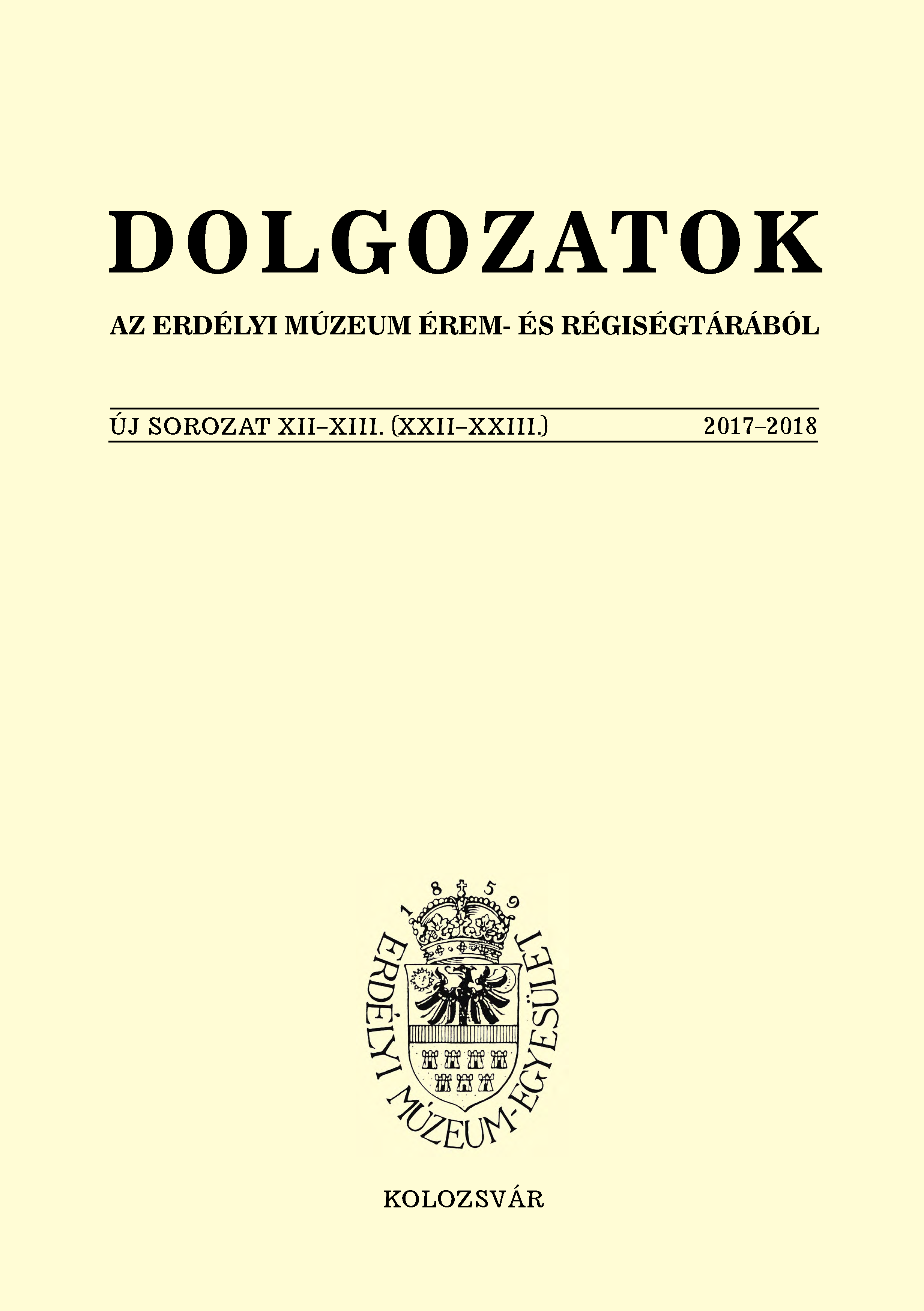
Árpád Buday (Marosgezse/Gheja, 17 January 1879 – Szeged, 7 April 1937). Private professor of the university of Cluj (1911–1917), honorary public non-ordinary professor (1917–1918), secretary of the Supervisory Board of the Mensa Academia and Students’ Home (1904—1919). During World War I, this office offered invaluable experiences obtainable elsewhere for a students’ welfare leader. As a secretary, Buday was the one who had to consign the furnishings of the Mensa Academia to the Romanian Government Board after Transylvania became part of Romania. The Franz Joseph University resettled from Cluj to Budapest, and from Budapest to Szeged. From 1924, Buday moved to Hungary and worked as professor of archaeology in the university of Szeged (1924–1937). Meanwhile, he was the dean of the Faculty of Humanities (academic year 1931/1932) and vice-dean (academic year 1932/1933). In the academic year 1932/1933 – after the Great Depression –, he became the president of the Students’ Welfare and Protection Office at the university. As a president, he chose as his most important task the mitigation of the 1929 Depression’s – as he said “the general economic downturn” – harmful consequences. The Students’ Welfare and Protection Office was the first such university organization unit in our country. The office’s primary goal was to provide students protection and support within an institutional framework. One of its tasks was to build the system of constant student aid and another one to control the incoming aids. The institution’s emphasized task was to keep a record of all university students from moral and educational aspects. The head of the Office was the president who was chosen by the University Council. He was always a highly respected professor. This paper attempts to draw up the portrait of the “student protector professor” and to show the assignments he was to manage.
More...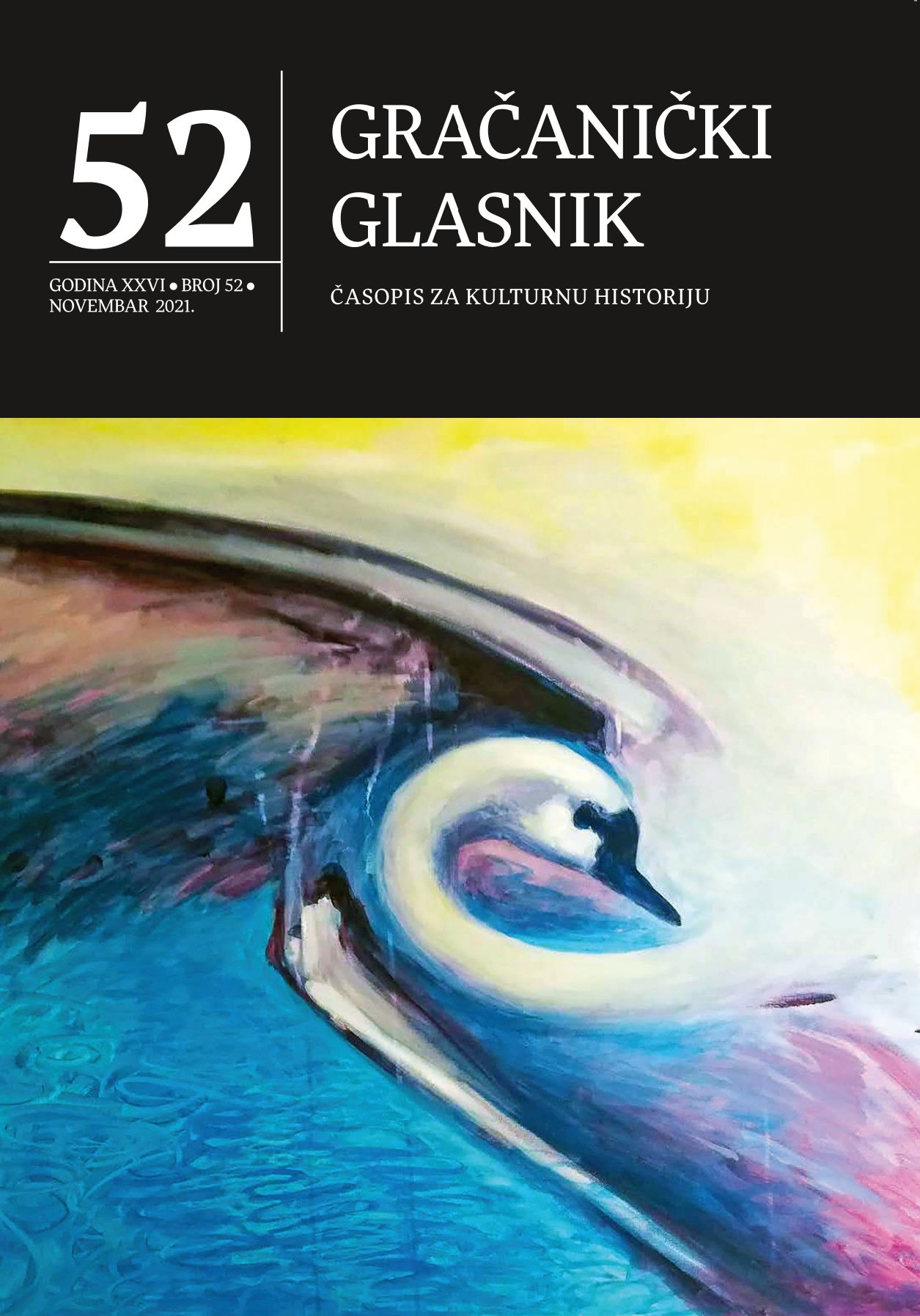
Review of: Fra Ljubo Hrgić, Putovanje Bosanskom Posavinom 1933. godine. Orašje 2021.
More...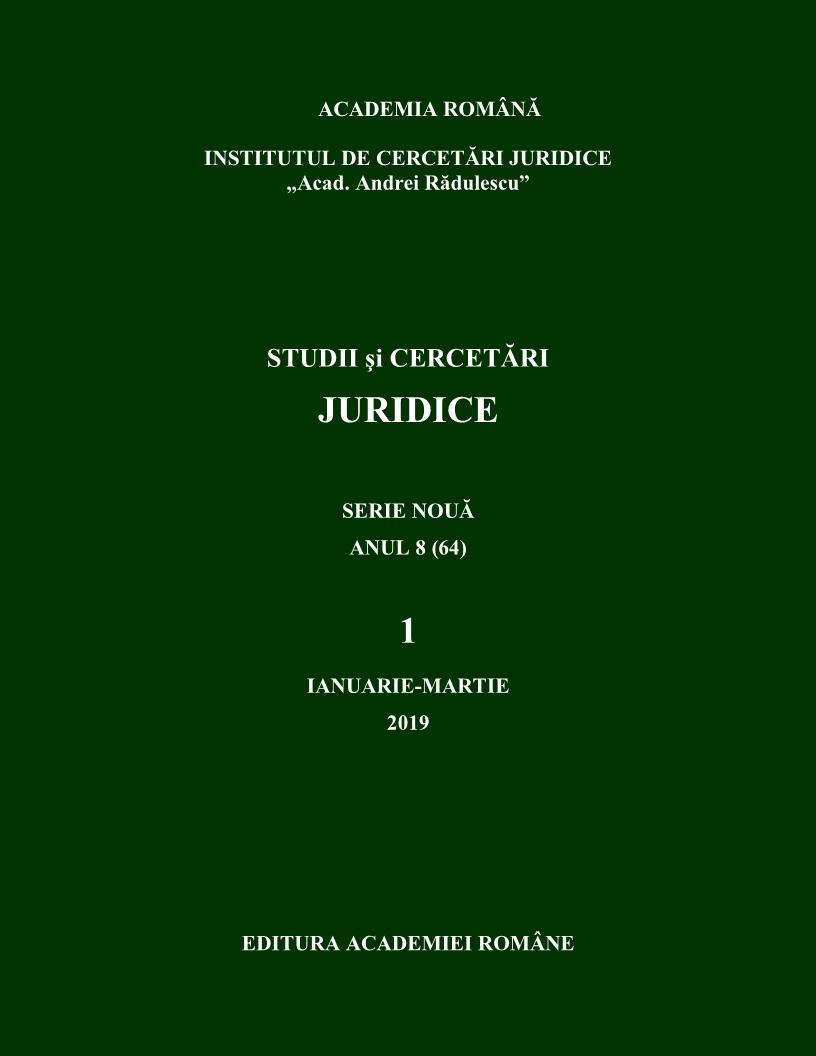
The legislative unification has been a complex process, with many steps covering the whole inter-war period; it has consolidated the national unity, by continuing the political and state unity completed on December 1st, 1918. The extension of the legislation of the “Old Kingdom” on to the adjoining territories has been the dominating method used, being finalized in 1928 for Bessarabia, 1938 for Bukovina, and ultimately in 1943 for Transylvania. At the same time, the process of elaborating of new codes has started, under the leadership of the Legislative Council, having been adopted and entering into force the Criminal and Criminal Proceedings codes (January 1st, 1937), and the entering into force of the private codes (Civil, Civil Proceedings, Commercial), adopted in 1938-1939, has been postponed sine die.
More...
The unification of the legal regime of legal professions, starting with the one concerning the attorney profession, has been a priority of the process of completing national unity, after its political and state realization of December 1st, 1918. By several regulations in this field – 1921, 1923 – the uniformization of the legal regime of the attorney profession has been succeeded by overcoming the major existing differences between the situation in the “Old Kingdom” and the one in Transylvania, Banat, Bukovina and Bessarabia, thus creating the national corresponding structures (starting with the Union of Attorneys and, eventually, the Union of Bar Associations). The creation of the Bar Associations of Greater Romania has, therefore, been a major and complex process, contributing to the unification of national juridical life, and to the consolidation of Romanian cohesion. After 100 years since the major event of 1918, the Romanian Bar Association finds itself facing the challenges rising from European and global integration of the profession.
More...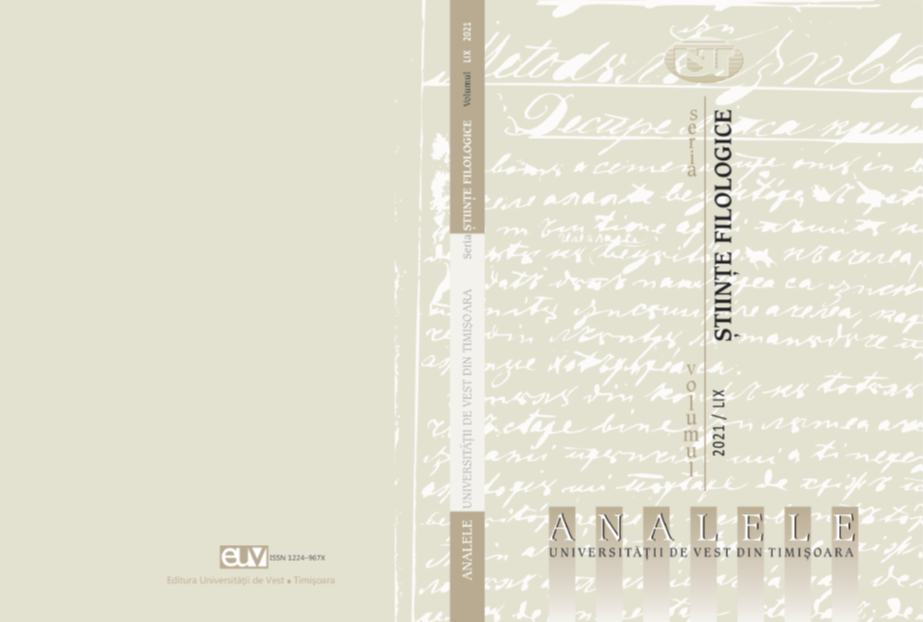
Cinema was, in interwar Romania, one of the most relevant agents of cultural modernization. It became an important subject of discussion not only in the artistic and literary milieus of the era but also in the writings of Romanian modernism’s founding promoter – poet and journalist Tudor Arghezi. The present investigation maps some of Arghezi’s most penetrating writings about cinema in his time.
More...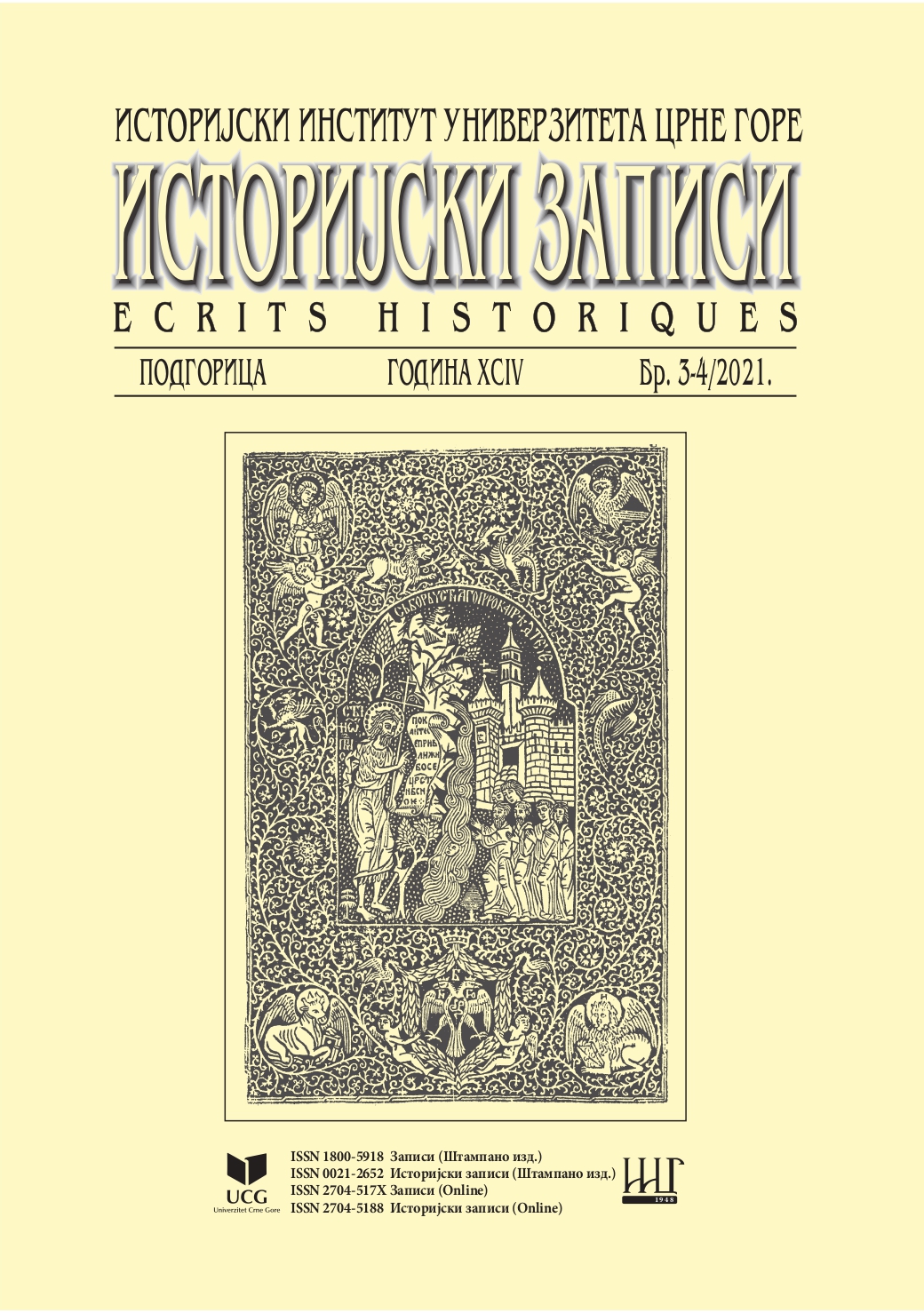
In this paper, the author gives an overview of the political situation in Banija and the regions of the Banovina Savska and Primorska and since August 1939 the Banovina of Croatia, areas where the Serbian and Croatian populations were mixed. Residents, mostly Serbs and Yugoslav loyalists of Glina and the wider area were deeply concerned about the deteriorating trends in interethnic relations, which are characterized by open threats, pressure and aggression aimed at political victory and secession of Croatia from Yugoslavia. The situation worsened after 1936 due to the strengthening of the Croatian Peasant and Civil Guard. The establishment of the Banovina of Croatia, intended to calm tensions, contributed instead to the radicalization of the situation. The Serb and Yugoslav affiliated population followed the situation with understandable concern, which only worsened as the Axis Powers have accomplished their goals in Europe. The reports of the civilian authorities, the gendarmerie and the army are full of the facts and testimonies about the situation and gloomy predictions if nothing would be done. Military and defense activities were sabotaged not only by the Frankists but also by the very top of the CPP (HSS). The creators of the Agreement (1939) on the Serbian side were deeply disappointed and felt betrayed. Newspapers and brochures are spread and read, retold too. That could only fueled mistrust and concerns, even fears. The loyal attitude of the SDS in the coalition with the HSS, as well as the calls for solidarity and cooperation from the part of local representatives of the ruling JRZ, did not reverse the increasingly radical attitudes of the HSS and the illegal Frankists. The events in April and May 1941 showed that the fears were justified.
More...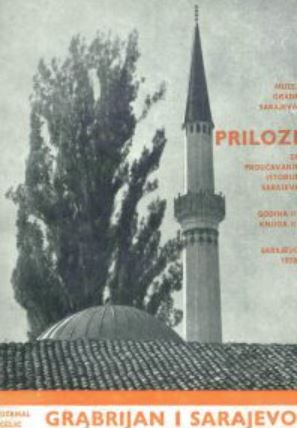
Arhitektura, skulptura i slikarstvo se međusobno dopunjuju. Grabrijan, koji na posao arhitekta nikada nije gledao zanatski, već idejno, stvaralački, osjeća intenzivnu potrebu za tim dopunama. On aktivno sudjeluje u radu kluba »Cvijeta Zuzorić«, piše kritike i prikaze, nalazi se među osnivačima »Collegium artisticum«-a, na otvorenju izložbe »Kruga« govori o razvoju slikarstva u Sarajevu... Ovo je izvod iz članka koji je napisao povodom Proljetne izložbe »Cvijeta Zuzorić« u maju 1937. godine, i u kome indirektno povezuje kretanje savremenog slikarstva i arhitekture.
More...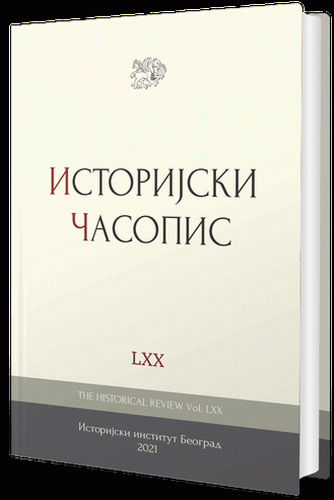
The policy of US President Woodrow Wilson at the Paris Peace Conference and his uncompromising attitude in regard to the Adriatic question is a topic that still interests researchers. The paper aims to shed light on the US public opinion about the Adriatic question and conclusion of the final Treaty of Rapallo (1920) between Italy and the Kingdom of Serbs, Croats and Slovenes. The paper relies on the most prominent US newspapers with the highest circulation and progressive magazines of the time, archival records and contemporary literature. A particular focus is placed on the evolution of views of the US press about the conflict between Italy and the Kingdom of Serbs, Croats and Slovenes concerning disputable territories in Dalmatia, and about the participation of the US peace delegation and President Wilson in the negotiations and definitive resolution of the Adriatic question.
More...